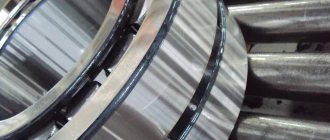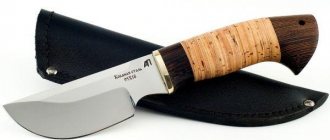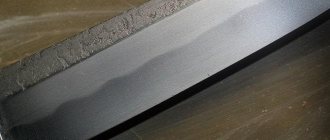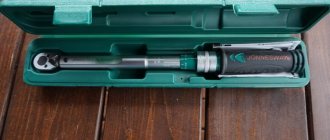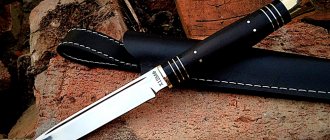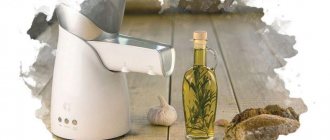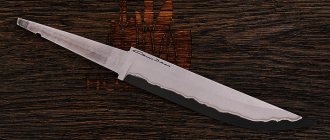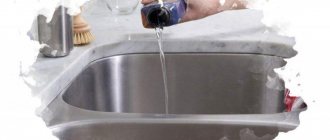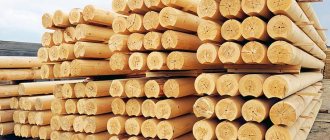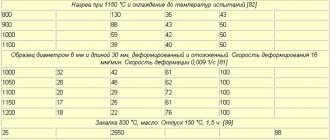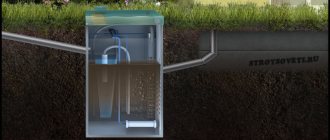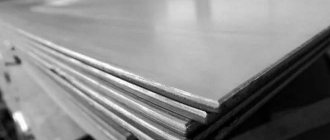When choosing a knife, we always try to evaluate what it is capable of, how long it will last, whether it will quickly become dull, and how convenient it is to use. It is difficult to answer all these questions based on the appearance or material of the handle. But there is one indicator that will allow you to evaluate a cutting tool and understand what to expect from it in the future. This criterion is steel for knives.
It is a mistake to think that steel is not the most important thing in a blade. The handle can be replaced, the sharpening can be adjusted, the shape and blade can be changed, but the steel will remain unchanged. And if the quality of the knife steel does not coincide with the purpose of the knife or does not correspond to it at all, then all that remains is to part with such a tool. So that such an ending is not logical, let’s figure out what it is, the German word “steel”, what it is, what it consists of, how it differs and which brand is more suitable for which knives.
Characterizing steel
First of all, let's find out what “steel” is. In chemistry lessons, we were told that steel belongs to solid solutions called alloys. The main component is iron (Fe), the content of which starts from 45%, and carbon (C). The remaining components play the role of impurities. The main characteristics of knife steel include the following indicators:
- Strength (Hardness; its limit is determined by tensile steel) is a property of the alloy that determines the degree of resistance to the formation of defects and destruction; determines the level of plasticity.
- Density - or specific gravity; the ratio of the weight of steel to the volume it occupies (g/cm3) practically does not change under the influence of temperatures; good scores range from 7.65 to 7.85.
- Hardness (Toughness) - the ability of an alloy to resist external loads, leaving its shape unchanged; measured in knives on the Rockwell scale (HRc or Rc): from 20 to 67 HRc; a good indicator is within 52-62 HRc.
- Toughness is a measure of steel’s resistance to the formation of cracks, chips, and fractures under the influence of impact or stress.
- Wear resistance - the level of ability of steel for knives not to wear out during its operation, under the influence of solid bodies, maintaining weight and shape during friction; The following types of wear are distinguished:
- adhesive - contact of smooth steel with a smooth body;
- abrasive - contact of smooth steel with a rough body (sand, powder, clay, etc.).
- Corrosion resistance - level of resistance to external air and liquid reagents; a high degree of anti-corrosion, as a rule, forces you to sacrifice other properties of the knife.
- Elasticity - the degree of restoration of the shape of the alloy after the action of loads; the opposite of plasticity.
- Edge retention degree
A knife made of premium grade Damascus steel has the highest degree of cutting, strength and elasticity. In second place is damask steel. In addition to these indicators, the capabilities of steel are determined by equally important processes during its processing:
1.
- hardening - can be of varying degrees and affects strength;
- heat treatment - determines softness, ability to dull if the blade is underheated, degree of fragility (high if the blade is overheated).
The main task in the manufacture of an alloy is to find the optimal combination between strength and hardness, strength and wear resistance, and so on. The harder the steel, the worse its strength, and the more ductile it is, the worse it holds an edge. Therefore, before we say which knife steel is better, we will repeat it again - it all depends on the intended purpose of the knife.
What is steel alloy made of?
In addition to the iron and carbon we already know, steel can contain quite a few important components from the periodic table, which to one degree or another affect its properties, directly affecting the characteristics of knife steel. Those elements that are introduced into the alloy to improve its certain properties are called alloying, and steel is called alloyed. Let's start with the required component, and then according to the degree of prevalence in steel.
- Carbon. Thanks to its presence, steel can be subjected to a hardening process. The alloy contains no more than 2.14%. If there is more of it, then this alloy is called cast iron, if less, then tin. Its task is to provide the alloy with the required strength and hardness, reducing viscosity and flexibility to the required levels. If it contains more than 0.6%, then the alloy is said to be high-carbon. Mid-priced knives, kitchen options often contain carbon from 0.4% to 0.6%.
- Chromium. Responsible for resisting aggressive air-liquid environments. In other words, it provides knife steel with corrosion resistance. Its content in the alloy must be at least 11.5%. A high chromium content affects hardness. If it is 14% or higher in the alloy, then this steel is classified as “stainless”.
- Molybdenum. Prevents the appearance of brittleness and fragility of the knife, allows steel for making knives to be resistant to high temperatures. Affects the uniformity of steel composition, increasing the properties of Chromium and improving all properties of the alloy. If its content is more than 1% in steel, then the alloy can be subjected to “air hardening”.
- Vanadium. Increases wear resistance and strengthens the strength of steel. Its increased hardness is used to create fine-grained alloys, making it possible to obtain a blade with a blade of a high degree of sharpness. However, sharpening such a knife will not be easy.
- Tungsten. Increases wear resistance and increases the hardness of steel. This chemical element has a melting point higher than other metals. If the alloy contains chromium or molybdenum, then in tandem with any of them, tungsten improves the cutting ability of the knife.
- Cobalt. It is added in small quantities to alloys, increasing their hardness and cutting properties. Contained in steel in an amount of approximately 1.6%.
- Nitrogen. Often acts as a substitute for nickel and carbon. If there is not enough carbon in the alloy, adding even 0.1% nitrogen allows the blade to be hardened. It enhances anti-corrosion properties and increases wear resistance.
- Nickel. Significantly increases the degree of strength, hardness, toughness and anti-corrosion.
- Silicon. Affects the hardness of the alloy, increases the anti-corrosion properties and degree of strength of the knife, removing oxygen from the metal. It is introduced into steel at the forging and rolling stage.
- Sulfur. Its content has a good effect on the ability of the knife to be processed. However, it reduces the knife's strength and corrosion resistance.
- Manganese. Gives steel a grain structure, increasing strength, hardness and wear. Introduced into steel during rolling and forging.
- Niobium. Titanium. Rare components. Increases corrosion resistance, enhances wear resistance and strength of steel.
- Phosphorus. It’s better not to be proud of the steel for knives where it exists. Very harmful to knife metals. Increases fragility and brittleness, reduces the mechanical qualities of the alloy. It shouldn't exist at all.
Now, knowing the content of necessary and harmful components, you can easily understand the composition of the alloy. But these are not all “metal” secrets. Now let's get to the fun part - types or brands of steel for knives.
Characteristics of steel X12MF
Steel grade X12MF is called tool grade. It has unique technical characteristics, which is largely due to its chemical composition. The variety of chemical elements is strictly defined, and each component has its own functional load.
The chemical composition of X12MF includes:
- carbon;
- molybdenum;
- phosphorus;
- vanadium;
- chromium;
- silicon;
- nickel.
The highest specific indicators are for phosphorus, carbon, and chromium. Carbon is present here within 1.6% and is responsible for the wear resistance and hardness of the metal. Chromium (12%) not only contributes to the steel's resistance to wear, but also enhances the cutting properties of the blade. The same amount – 12% – belongs to phosphorus. This element makes the metal ductile.
Other additions are made to the steel to make it strong, elastic and not susceptible to temperature changes. Thanks to this composition of elements of the periodic table, Kh12MF knife steel can rightfully be called exclusive. It has virtually no analogues among other modern alloys.
According to knowledgeable people, hunting knives made of X12MF steel are distinguished by impeccable strength and durability. The ability of this steel to cut a wide variety of materials is unique, in addition, it is extremely resistant to corrosion. It should be noted that this brand is produced exclusively in strict accordance with GOST standards.
However, manufacturers also take into account the certain whimsical nature of the X12MF in processing. So forged steel X12MF, in fact, is very difficult to forge. Forging is largely complicated by the fact that this metal must be hardened at a temperature of no more than 950 degrees. If the blacksmiths allow the temperature to be exceeded, the alloy becomes brittle. And this will negatively affect the quality of the future steel product.
Many consumers ask which steel is better - X12MF or Damascus. It’s difficult to answer unequivocally here. It is known that Damascus knives are valued all over the world for their strength and elasticity. The steel of the marking in question is somewhat inferior to them in the level of fragility. However, Damascus is always much more expensive, but the X12MF has earned fame due to its functionality. And where the user regrets using a Damascus knife, he always successfully uses cutting weapons made from domestic steel.
Let's get acquainted - Steel grades for knives!
To make it more convenient and easier to understand what kind of alloy we are dealing with, it was proposed to designate a set of chemical and mechanical components that characterize steel by steel grades for knives. Depending on the country of origin, they have their own markings and characteristics. Let's get acquainted with popular stainless steel grades, foreign and domestic production:
|
Russia is also one of the countries that produces high-alloy and high-quality carbon steel. Most Ukrainian manufacturers of cutting tools use alloys exclusively of domestic production.
Steel X12MF: pros and cons for knives
Knife blades made from X12MF steel have numerous advantages:
- High blade strength.
- The knife remains sharp for a long time. A blade made from this steel does not become dull for a long time and does not need sharpening. Wear resistance ensured by optimal carbon content
- Good cutting properties. The knife will cut both a thin sheet of paper and a strong branch of a bush with equal ease.
- Good heat resistance and hardenability.
- Easy to care for. The metal does not require polishing, protective coatings or anti-corrosion liquids.
- Steel can withstand both high and low temperatures.
- Has resistance to corrosion.
- Low price.
X12MF steel also has disadvantages. These include:
- Hardening a knife is impossible at home. At temperatures above 950⁰, the alloy becomes brittle and can simply crumble.
- It is difficult to sharpen a blade without special tools.
- Low level of elasticity. This grade of steel is quite brittle and is not suitable for throwing knives.
- The blade will not withstand severe bending loads, which limits its length.
- Corrosion may occur due to improper care, as well as prolonged and frequent contact with water, acids, and salts.
- The surface of the steel is matte. The metal will not shine.
Carbon steel alloys
An analogue of Russian steel X12MF is grade D-2, which contains approximately 12% chromium, which is not enough to effectively cope with corrosion. However, of all carbon steels, this alloy is the most corrosion-resistant. Although D-2 is the least durable of the high carbon steels, it still holds an edge well.
The domestic brand 95Х5ГМ or A-2, used for the production of combat knives, is harder than the previous one, but inferior in wear resistance. In addition, when making products from it, it is not possible to carry out additional hardening and tempering, since it “self-hardens” in air. This steel is used in particular by Chris Reeve and Phil Hartsfield.
U8 is excellent for forging large knives with increased strength requirements. Can only be used in conditions where there is no heating of the edge. Carbon content – 0.78-0.83%, chromium – no more than 0.2%. Low chromium content causes poor corrosion resistance. Hardness ranges from 61-63HRC. With proper upsetting, a hardness of up to 67HRC can be achieved. Its analogue is steel 1095.
Russian analogues of steel 50 and 60 are steel 1060 and 1050, which are more often used in the production of swords. Steel grades starting with 10 (1095, 1084, 1070, 1060, etc.) with a decrease in carbon, the amount of which corresponds to the last numbers (95.84...) become less durable, hold an edge worse and are more tough.
Which steel to choose for a knife
The material for a hunting blade is the subject of much discussion and controversy. Different experts recommend different steels, and their opinions often differ.
If you ask ten different experienced hunters which steel they think is best for a hunting knife, it is possible that we will get ten different answers.
Approximately the same situation will be with craftsmen who make knives and metallurgical technologists.
Despite the abundance of opinions and, often, polar views, there are general principles that will allow even a beginner to choose the right steel for a hunting knife. The most important thing is to understand exactly what tasks the knife will face, under what conditions it will be used, and then correlate this with the properties of a particular alloy.
It is important to understand that a hunter’s knife is, as a rule, a universal tool, the tasks of which may include skinning a carcass, cutting tomatoes for a strong snack, planing wooden branches, and even chopping bones.
Depending on the tasks and conditions of use in a particular case, different grades of steel may be most suitable.
Classic and powder steels
There are several grades of steel that are traditionally used for hunting knives. The main features of these steels are the combination of high hardness and strength, as well as the ability to maintain cutting properties for a long time. We will look at several steels that are most often recommended for hunting knives. For convenience, it makes sense to divide steel into the so-called. “classic” and powder remelted steels.
The old postulate about the cutting properties of steel goes like this: “Whatever cuts well, rusts well.”
.
Regarding classic steels, this is really not far from the truth; for example, it is high-carbon steels that hold an edge better than others, while being more susceptible to corrosion than others. Powder-melted steels and modern rolled steels disprove the truth
that only what rusts can be cut. So, with serious anti-corrosion properties, these steels have high hardness and retain cutting properties for a long time.
Diamond Myth
One of the common recommendations from hunters is XB5 steel, also known as diamond. Steel, about which many legends are told, was used in jewelry. The high hardness of this alloy allows not only to separate the skin, but also to easily cut through tendons and even cut bones. Moreover, the ability to maintain an edge of this alloy is such that after planing the bones with a blade made from this steel, it will be possible to thinly slice a tomato.
XB5 is a medium alloy alloy that contains a lot of Tungsten (up to 4.30%) and a little chromium (up to 0.70%), as well as a small amount of minor alloying elements (manganese, silicon, etc.), which are used to bind free oxygen. The hardness of XB5 reaches 60-65 HRC.
As with most high carbon steels, the downside of diamond is its poor corrosion resistance. After the first use, the top layer of the blade may darken.
The issue, of course, can be solved by cleaning and etching in a sprite, but rust and the need for constant maintenance can become a problem for many. Another significant problem is the low ductility of the blade, which leads to sensitivity to fracture loads.
It is not recommended to cut anything with such blades because the edge will not hold the impact load well. Separation of carcass bones in the area of large joints can also be fatal for a “diamond” blade.
95X18 - Russian hit
95X18 is one of the most popular steels for hunting knives in Russia. I think I won’t be mistaken that every third modern blade in the Russian Federation is made from this alloy. The steel composition is 1% carbon and 19% chromium. Due to the presence of a sufficiently large number of carbides in the composition, 95X18 heats up to 58 HRC.
The steel is less hard than XB5 and not as ductile as U8 (although it can withstand fracture loads better than “diamond”), while the impressive chromium content in the composition eliminates one of the main disadvantages of the steels described above - corrosion. With similar cutting and strength characteristics, 95X18 rusts much less and does not require such careful maintenance.
Powder steel and niobium-containing alloys
There are many myths about the miraculous properties, as well as about the complete unsuitability of powder steel. The truth is that powder remelting is a fundamentally new technology that allows you to obtain properties that were difficult to obtain using traditional methods. They are valuable for hunting because they can easily combine high hardness and excellent corrosion resistance.
Low carbon steels
50 HGA (analogous to 5160) is a brand that is in great demand in blacksmithing, in particular in the manufacture of large blades with increased strength requirements. To facilitate hardening, chromium is added to this alloy, the amount of which, however, is not so high as to impart anti-corrosion properties. This grade contains approximately 0.6% carbon.
Russian steel ШХ15 (52100 by American standards) is a grade that is more suitable for the production of hunting knives. It is inferior in strength to the previous brand, but at the same time superior to it in its ability to hold an edge.
In handicraft production, as a rule, more “labor-intensive” brands are used. These can be spring-type structural steels of type 65G (the analogue is American steel 770). The letter “G” implies the presence of manganese in the alloy. Forging temperature from 760 °C to 1250 °C. With a manganese content of more than 1%, this grade is prone to temper brittleness. Cooling is done in air. Popular due to its low cost.
Stainless steels
40X13 is a corrosion-resistant, heat-resistant steel, characterized by a fairly stable cutting edge and is easy to sharpen. Hardening – at + 950°С… +1020°С, tempering is carried out at a temperature of +200°С.
Among domestic steel grades, steel 65X13 is the most popular in the manufacture of knives. It contains 0.65% carbon by weight, and 13% chromium. As mentioned above, the addition of chromium increases the corrosion resistance of steel. If we take foreign analogues, then its analogue can be called 425mod, which is a modification of 420 steel, however, it is softer, since the carbon content in it is only about 0.4 - 0.54%. 420 steel can be artificially hardened by quenching using liquid nitrogen, which saturates the surface layers of the alloy. This is done, in particular, in the production of knives at the Brazilian company Tramontina.
Normally, quenching of steel 65X13 is carried out at a temperature of + 980 °C... + 1038 °C using oil as a quenching medium. Annealing of this grade of knife steel takes place for 6 hours at a temperature of + 871 °C, forging - at + 1066 °C... + 1121 °C, and tempering lasts 2 hours at + 565 °C. There are many modifications of 420 steel, which, when marked, are distinguished by the letters following the number 420. This steel is used in mass production for the manufacture of knives.
50Х14МФ has practically the same characteristics, with the exception of higher resistance to corrosive agents and slightly greater softness. Hardening occurs at + 1045 °C, tempering – at + 200 °C.
Russian steels 65Х13, 75Х14МФ are analogues of Japanese-made steels Aus 6, Aus 8 (420 HRА, 420 HRВ), and Aus 10 - 420 HRС has no Russian analogue. Russian steel 75Х14МФ also has “brothers” 8Cr13MoV and 8Cr14MoV - alloys made in China, which are characterized by the ability to be easily sharpened, hold a cutting edge for a long time and at the same time have anti-corrosion properties. Due to the presence of molybdenum and vanadium, which inhibit diffusion processes during tempering, knives made of this steel grade retain strength and hardness.
Steel 95X18 demonstrates good strength with good flexibility. This alloy holds an edge for quite a long time. Its Rockwell hardness is 56-60 units. If exposed to salt or moisture for a long time, corrosion may occur. Sharpening such knives is more difficult than ordinary kitchen knives. Quenching using oil is carried out at a temperature of +1050 °C, and tempering carried out at different temperatures gives different hardness. For example, at + 150 °C the hardness will be maximum (about 59-60 HRC), and at + 600 °C - only 44 HRC. Steel 95X18 is prone to brittleness.
100Х15М (RWL34, ATS34) is very resistant to corrosion, but has a number of disadvantages that complicate working with it. Low thermal conductivity requires stepwise quenching, and the tendency to cracking requires slow cooling in oil. Tempering is carried out at +150 °C.
20X13 (Japanese equivalent - 420J2) is a cost-effective steel for making knives. Annealing of this grade occurs at +840 °C... + 900 °C. Hardening – at + 950 °C… + 1020 °C with cooling in oil and air. Inexpensive, easy to process and, as a result, quite common both as an independent material and as a component of composite knives.
40X13 (420HC) is a high-carbon steel that retains sharpness well during operation and, at the same time, has good strength and corrosion resistance. Quenching, tempering and annealing occur at almost the same temperatures as the previous steel, with a difference of several tens of degrees.
Steel x12MF and 95x18 compare
To choose a decent knife, you need to pay attention to what steel the blade is made of. The cutting characteristics of the knife will depend on the blade. Let's look at some of the most common types of steel today - 95Х18 and 65Х13.
Steel 95X18 is considered the more popular choice among all stainless steels used in the manufacture of blades. The fact is that it has better properties despite the fact that the price of such knives will be cheaper. Steel 95X18 sharpens well and also holds an edge very well. When properly heat treated, a 95x18 forged steel blade is highly durable and has excellent flexibility. There is also a “fly in the ointment” in this “barrel of honey”; forged steel 95X18 is very capricious in hardening, as a result of which the process of making blades from such steel is more labor-intensive and not every blacksmith is able to show all the advantages of this steel and minimize the disadvantages.
Another type of steel that is often used in the manufacture of blades is 65X13. Most often, Steel 65X13 is used as the main material in the manufacture of saw blades, kitchen knives, etc. Products made from this steel have high cutting properties, are more resistant to corrosion and can be sharpened even in field conditions. But, if the knife is used for a long time in an aggressive environment, its blade may darken a little.
If you want to buy a knife for hunting or fishing , then it is better to choose 95x18 steel; a blade made of this steel will be more resistant to corrosion and will hold an edge longer. Steel 95x18 is stainless, which will be a significant plus for a fisherman.
Whatever steel you choose, you can be sure that we follow all the details in hardening and tempering. A knife purchased in our workshop will please you for a long time.
Also, do not forget about the profile of the blade and the material of the handle.
Today we will analyze the most popular, practical, popular and not the most expensive types of forged steels x12MF and 95x18.
Steel X12MF. Steel is used to make profiling rollers of complex shapes, sections of body dies of complex shapes, complex dies when forming sheet metal, standard gears, rolling dies, dies, dies and punches of cutting dies with a complex configuration of workers. X12MF steel has proven itself well in the manufacture of knife blades. Unpretentious, but easy-to-use steel for making knife tools. X12MF steel holds sharpening well, has high strength, and holds the cutting edge well. When exposed to an aggressive environment (fruit, fatty meat or fish), it may become coated or dark spots may appear on the knife blade, so a knife made of X12MF steel requires care. It should be noted that many manufacturers pour damask steel based on X12MF.
Read also: Internal grinding machines for metal
Composition of steel grade X12MF: Carbon (C) 1.45 – 1.65%, Manganese (Mn) 0.15 – 0.45%, Chromium (Cr) 11 – 12.5%, Silicon (Si) 0.10 – 0.40%, Molybdenum (Mo) 0.4 – 0.6%, Vanadium (V) 0.15 – 0.3%, Nickel (Ni) 0.35%, Phosphorus (P) 0.03%.
Typical steel hardness for Kh12MF knives on the Rockwell scale: 60 – 62HRc.
Analogs of steel for X12MF brand knives in other countries: SLD (Japan), X155CrMo12.1 (Germany), SKD-11 (Sweden), D2 (USA).
Steel 95X18. 95X18 is a high-alloy stainless steel for knife production, with high hardness, cutting edge resistance, and high corrosion resistance. Steel 95X18 is considered one of the best materials for the manufacture of blade products. In general, it is one of the best steels used for the production of knives in terms of price-quality ratio. The industrial purpose of steel 95X18 is parts that require high strength and wear resistance and operate at temperatures up to 500C or are exposed to moderate and aggressive environments.
Composition of steel grade 95Х18: Carbon (C) 0.90 – 1.00%, Manganese (Mn) 0.80%, Chromium (Cr) 17 – 19%, Silicon (Si) 0.80%, Phosphorus (P) 0.025 %.
Typical steel hardness for 95X18 knives on the Rockwell scale: 57 - 59Hrc.
Analogs of steel for 95X18 knives in other countries: AUS-8 (Japan), X90CrMoV18/1L4112 (Germany), 123C26 (Sweden), 440B (USA).
Conclusion: the anti-corrosion properties and qualities of steel 95x18 are better, but its hardness is slightly lower than that of x12MF, which requires slightly better care, and if you want a blade made of x12MF to always have its original appearance, it is better not to place it in an acidic and greasy environment, will darken. But some people choose the beauty of the blade, while others choose the best cutting qualities. In fact, if you do not set a task for the knife in some way: cutting large animals, then you will not notice the difference in hardness. Even if the blade darkens, it will not affect the cutting quality. Only for aesthetic purposes. The latest proposals concern x12MF steel. If beauty is more important, choose forged 95x18.
Read also: Precision investment casting
Among the steels used by knife manufacturers, one of the hardest to process and, as a result, produces the most reliable blades is X12MF tool steel. It is from this steel that the most reliable hunting and outdoor knives are made.
According to GOST, Kh12MF steel is classified as die tool steel. It is used to create cutting and perforated dies, hole-punching matrices and matrices with complex shapes.
The main characteristics of this steel: high mechanical strength, wear resistance, high cutting ability. Metal cutting dies made from this steel do not lose their sharpness even after cutting several thousand pieces.
Knife makers who work with X12MF steel know that it is difficult to process and requires strict adherence to the hardening and tempering procedure.
It is these properties of Kh12MF steel that bring its characteristics closer to damask steel. Here again it is worth making a reservation and recalling that the legendary features of damask steel include high strength and reliability, comparable to cast iron alloys. But at the same time, the alloy should allow the production of products by hand forging. And of course, damask steel, processed in accordance with the correct technology, gives the corresponding damask pattern on the blade.
Quite often you can read that X12MF steel is called cast damask steel. Some unscrupulous manufacturers who make knives from this steel (and not only from this) use etching to apply a pattern to the blade that imitates a damask pattern and offer such knives to the buyer as “damask steel” knives.
However, it is worth paying attention to the fact that such a comparison is only possible if the X12MF is properly heat treated. Those masters who professionally deal with this issue have their own secrets. But those who manage to develop the correct hardening and tempering technique come to the conclusion that the result is a blade in hardness (63-62 HRC) comparable to damask steel.
Read also: How to ring a magnetron in a microwave video
The cutting edge of such a knife does not chip and does not create jams. With this knife you can cut nails and metal corners, and pierce thick-walled iron barrels. And at the same time, the knife maintains the integrity of the cutting edge and its performance characteristics.
Quite often there are debates on the Internet about whether X12MF can be compared with American D2 tool steel. Only lazy people haven’t written about comparing these steels, so we’ll do our bit. Someone grabbed X12MF, while others, on the contrary, claim that D2 gives a more reliable cutting edge. True, it is worth considering that most of these disputes are based on the subjective opinions of the authors, behind which there is usually the usual “like or dislike” for every person.
Everything falls into place if you look at the chemical composition of these steels. These steels are analogous in composition. The Russian classifier of steels also indicates that the foreign analogue of X12MF steel is D2 steel. Moreover, Kh12MF steel has a higher percentage of chromium content. It is this composition that, with certain heat treatment, gives a high hardness index (63-62 HRC). So when you read about the superiority of the D2 over the X12MF, know that the author is most likely guided by a subjective and unsubstantiated opinion.
The given data allows us to say that D2 and Kh12MF steels are analogues. And in some characteristics, the X12MF even surpasses its foreign counterpart.
Just for fun, it’s worth paying attention to the fact that few Western companies make knives from D2 steel. This steel, like X12MF, is quite labor-intensive to process. For example, the COLD STEEL company produces only one model from this Leatherneck steel. This is a tactical knife designed for US Marine units.
In Russia, where most knives are produced in small forges, X12MF steel is more popular and is used to create reliable hunting and survival knives. The main requirements for such a knife are high reliability (you can break a knife only if you purposefully set such a goal) and a long time of maintaining the sharpness of the cutting edge. X12MF steel is excellent for creating knives of this type.
Bulat and Damascus
Bulat is a hard and tough alloy of iron and carbon. In terms of carbon content, damask steel is closer to cast iron, but in terms of physical characteristics, in particular, malleability, it is related to low-carbon steels. A characteristic dendritic structure can be obtained by alloying ShKh15 steel with cast iron, followed by annealing at a temperature of 600 °C for 80-140 hours. This production method is called low-temperature. The high-temperature process (heating above 1430 °C) of producing damask steel does not require annealing, but is complicated by the fact that the presence of oxygen must be eliminated during the production process.
Ladies' steel is divided into welding and refined. Refined Damascus steel is nominally Damascus because it is made from a single type of steel from which impurities have been burned off during the manufacturing process. Damascus welding was produced by folding strips of steel with different carbon contents, welding such packages and forging, and then repeating the process. With each forging, the layers penetrated each other, forming a characteristic pattern.
Powder steels
Among the grades of steel for knives, the so-called powder steels deserve special attention. During the production process, to speed up the heating process, the alloys are crushed to micro-sizes. This is done by spraying the melt onto the crystallizer using air, inert gases, nitrogen, etc. After this, the resulting powder is sealed into a container made of plastic material, subjected to vacuum and sealed. Then the container is subject to pressing at pressures of hundreds, or even thousands of atmospheres, and then sintering at high temperatures and pressures.
The result is material that:
- easier to sand;
- subject to forging;
- has better mechanical properties;
- has uniform grain;
- nitriding is facilitated.
At the same time, powder steels also have a number of disadvantages, the main one of which is the high cost of the resulting material, even compared to alloy steels. In addition, such alloys contain more non-metallic inclusions.
The most common representatives of powder steels are alloys from Bohler and Undeholm. The steels of the first company bear the name of the company and among them you can find high-speed vanadium-cobalt (Bohler S290) and tungsten-cobalt (Bohler K390). The Undeholm company produces a wide range of powder steels, of which the most popular in the manufacture of knives are Vanadis 4 Extra, Vanadis 6, Vanadis 10, alloyed with vanadium. Tool steels are called Vancron, corrosion-resistant steels are called Vanax.
How to choose a knife?
From all of the above, several conclusions can be drawn. The main thing when selecting a blade is to find the optimal balance of three qualities: the duration of sharpening retention, anti-corrosion properties and resistance to impacts. Usually the ability to hold an edge is tested on hemp rope, rope, etc. You can, of course, cut plastic bottles, but the result should be the same. The longer the cutting edge stays sharp, the better the knife. And this is the only parameter that you can check in the store. Ultimately, you can just take a few pencils with you and sharpen them on the spot. A blade of normal hardness can easily withstand such a test.
Corrosion resistance is a parameter that cannot be checked when purchasing and you have to rely on the honesty of the seller. Therefore, it is advisable to purchase products certified according to Russian or European standards. Once again we would like to draw your attention to the fact that alloying additives in the form of chromium and molybdenum increase the resistance of steel to corrosion, but at the same time can negatively affect the mechanical properties of knives.
If you purchase factory-made knives, the brand and hardness must be indicated on them. The absence of a mark indicates that this product is of low quality. If we are talking about piece knives, then each master also puts his own identification mark (stamp). In addition, each famous master has his own “handwriting” and, as a rule, such knives are described in detail in catalogs. Steels for making single-format knives include materials such as, for example, damask steel and Damascus. They are very difficult to produce on an industrial scale and the costs of such production are not recouped.
The presented steel grades showed different results: some were better, some were worse. Your choice depends only on the intended purpose of your knife, the ability to care for it and the requirements for the frequency of sharpening. Comparing knife steels will help you make the right choice. The summary table will tell you about the more detailed content of the main elements in each brand.
We have identified several types of steel alloys, trying to determine their level of quality suitable specifically for knives:
- the best - these include the M390; ZDP-189/249; CPM S35VN; CPM S30V; Elmax; 3G; 50Х14МФ; N690; S30V;
- medium quality is 154CM; ATS-34; VG-10; 440C; 420HC; VG-1; AUS-8; 8Cr13MoV; X12MF; 9XC;
- low quality - often 420; AUS-6; 420J2, X12MF; 65G.
It is difficult to give any specific advice without knowing the functions that you plan to assign to your cutting tool. Choose what is convenient, what you like, what is right for you. We hope you found our review article useful.
